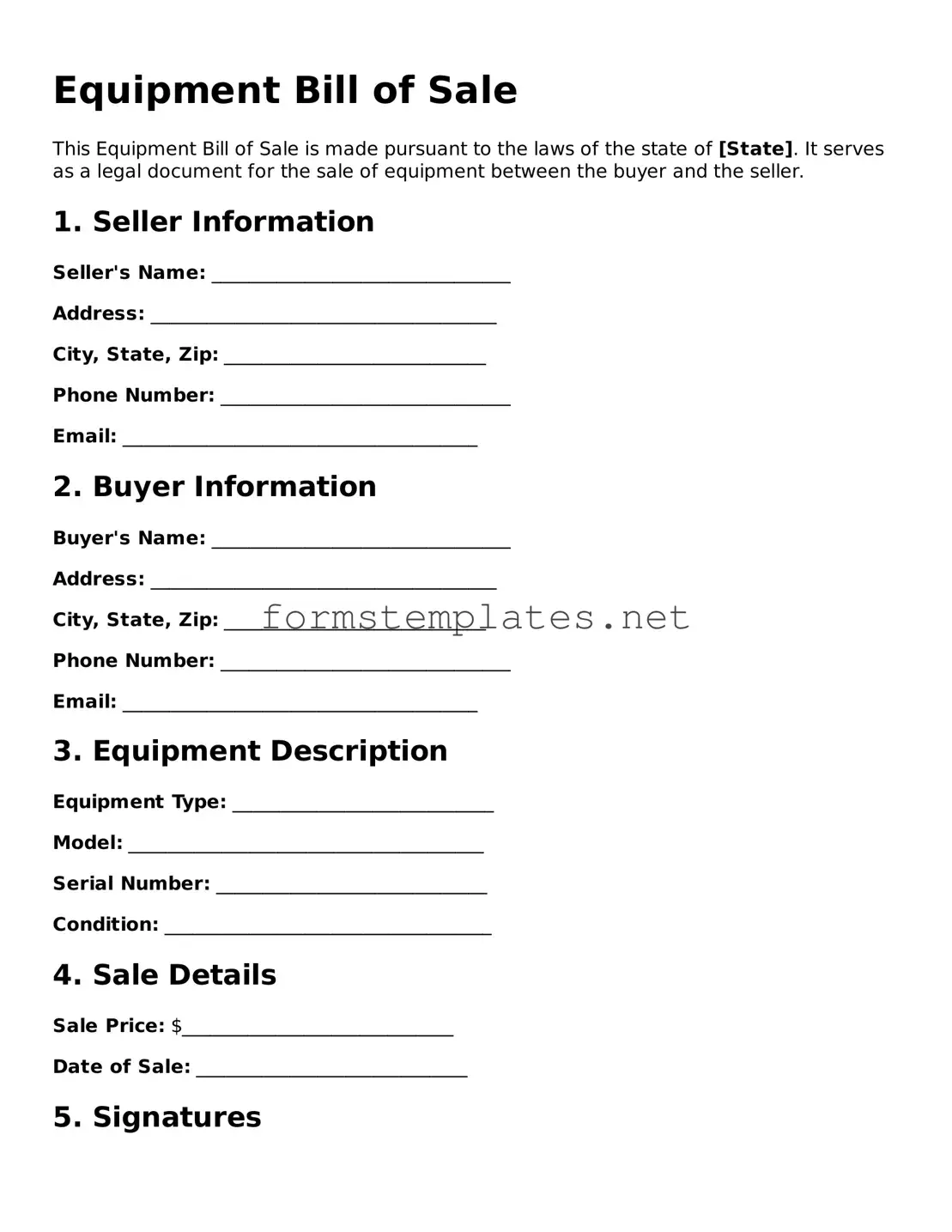Equipment Bill of Sale
This Equipment Bill of Sale is made pursuant to the laws of the state of [State]. It serves as a legal document for the sale of equipment between the buyer and the seller.
1. Seller Information
Seller's Name: ________________________________
Address: _____________________________________
City, State, Zip: ____________________________
Phone Number: _______________________________
Email: ______________________________________
2. Buyer Information
Buyer's Name: ________________________________
Address: _____________________________________
City, State, Zip: ____________________________
Phone Number: _______________________________
Email: ______________________________________
3. Equipment Description
Equipment Type: ____________________________
Model: ______________________________________
Serial Number: _____________________________
Condition: ___________________________________
4. Sale Details
Sale Price: $_____________________________
Date of Sale: _____________________________
5. Signatures
I, the undersigned seller, confirm the sale of the above equipment. The equipment is sold as-is with no warranties.
Seller's Signature: _________________________
Date: ______________________________________
Buyer's Signature: _________________________
Date: ______________________________________
6. Additional Terms
Any additional agreements or terms can be specified here:
________________________________________________________
________________________________________________________
7. Governing Law
This Bill of Sale shall be governed by the laws of the state of [State].
